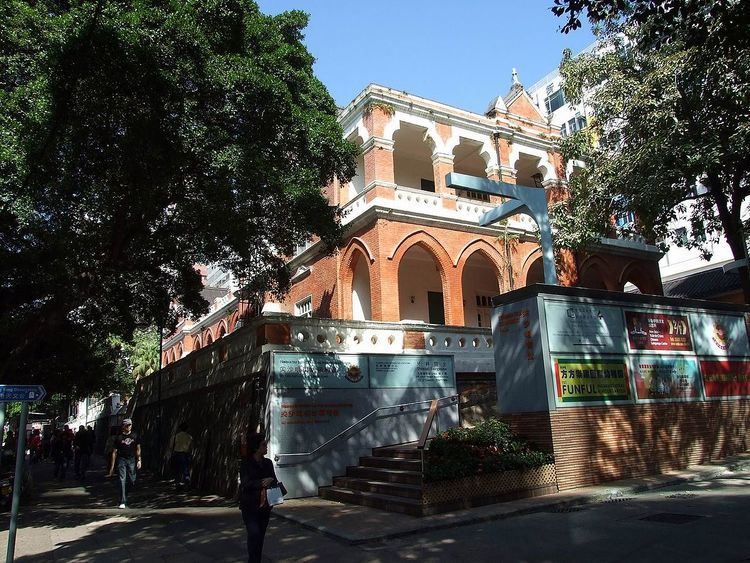 | ||
This article details the history and status of Heritage conservation in Hong Kong, as well as the role of various stakeholders.
Contents
- Government agencies and legislation
- Historic buildings
- Grading system
- Surveys and assessment
- Conservation initiatives
- Demolitions
- Other issues
- Intangible cultural heritage
- Related museums
- References
An indication of the size of the built heritage in Hong Kong is given by a territory-wide survey conducted by the Antiquities and Monuments Office (AMO) between 1996 and 2000, which recorded some 8,800 buildings. The preservation of Intangible Cultural Heritage is also an emerging theme.
Government agencies and legislation
In alphabetical order:
Historic buildings
As of 27 December 2013, there were 105 declared monuments in Hong Kong, and as of February 2013, there were 917 graded historic buildings (153 Grade I, 322 Grade II, 442 Grade III), of which 203 were owned by the Government and 714 by private bodies.
Grading system
Grades for historic buildings are defined as follows:
Surveys and assessment
A territory-wide survey on historic buildings conducted by the Antiquities and Monuments Office (AMO) between 1996 and 2000 recorded some 8,800 buildings. A more detailed survey conducted between 2002-2004 focused on 1,444 buildings. In March 2005, a seven-member Expert Panel comprising historians and members of the Hong Kong Institute of Architects, Hong Kong Institute of Planners and Hong Kong Institute of Engineers was formed by the Antiquities Advisory Board (AAB) to assess the heritage value of these buildings. The assessment was completed on March 19, 2009. As part of this work, the AMO proposed changes in the grading of historic buildings: 212 buildings to be Grade I, 366 to be Grade II, and 576 to be Grade III, and no grading for the remaining 290 ones. Current grades may be increased, decreased or removed.
Conservation initiatives
Conservation initiatives include:
Demolitions
The demolition of several historic buildings has led to public protest in recent years. This included the Edinburgh Place Ferry Pier (demolition completed in early 2007) and Queen's Pier, demolished in February 2008.
Other issues
Other issues include:
Intangible cultural heritage
The preservation of Intangible Cultural Heritage is an emerging theme in Hong Kong, with The Intangible Cultural Heritage Advisory Committee having held its first meeting on July 9, 2008. A territory-wide survey was carried out in 2011.
Related museums
Several other museums are dedicated to heritage and history. Most of them are hosted in historic buildings thematically connected with the displays. Heritage Trails have been opened to facilitate the visit of historic buildings.
